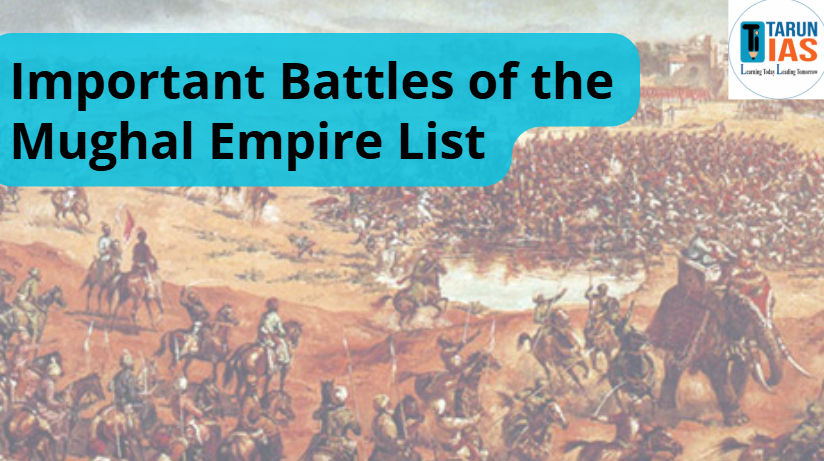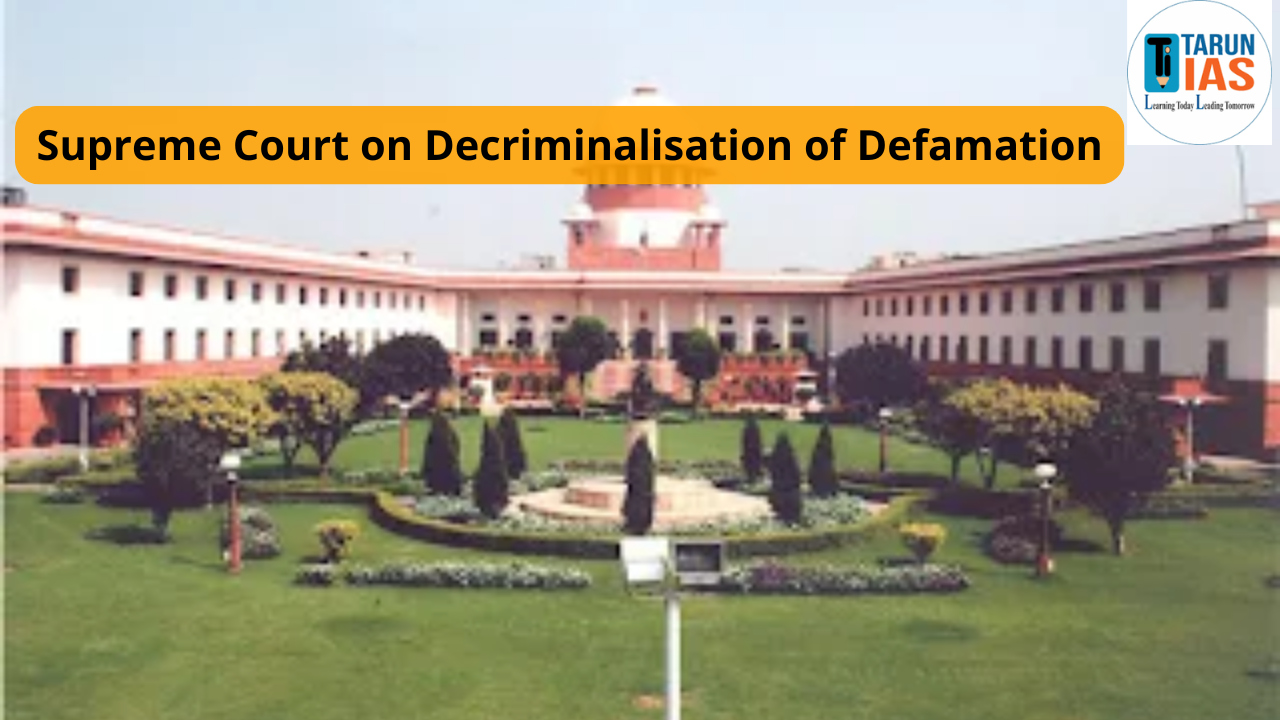The Important Battles of the Mughal Empire rose to power through strategic warfare, innovative military tactics, and relentless expansion. From the establishment by Babur in 1526 to the eventual decline marked by colonial resistance and internal rebellions, the Important Battles of the Mughal Empire played a pivotal role in shaping Indian history. This article highlights the famous Mughal battles, including the important battles of Babur, Humayun, Akbar, and the major battles of Aurangzeb.
| Important Battles in Indian History |
| Important Battles in Medieval Indian History |
| Important Battles in Modern History |
Important Battles of the Mughal Empire Overview
The Important Battles of the Mughal Empire, one of the most powerful and influential dynasties in Indian history, were built, expanded, and sustained through a series of significant military campaigns and strategic battles. These important battles of the Mughal Empire not only marked the rise and consolidation of Mughal rule but also highlighted the resistance posed by regional powers such as the Rajputs, Afghans, Marathas, and later, the British East India Company.
Also Read: National Parks In India 2025
List of Important Battles of the Mughal Empire
The list of Important Battles of the Mughal Empire, one of the most significant dynasties in Indian history, witnessed numerous battles that shaped its rise, consolidation, and eventual decline. It began with the First Battle of Panipat (1526) where Babur defeated Ibrahim Lodi, laying the foundation of Mughal rule.
| Battle | Date | Location | Opponents | Outcome |
| First Battle of Panipat | April 21, 1526 | Panipat, Haryana | Mughals (Babur) vs. Ibrahim Lodi (Delhi Sultanate) | Mughal victory; establishment of Mughal rule in India. |
| Battle of Khanwa | March 16, 1527 | Khanwa, Rajasthan | Mughals (Babur) vs. Rana Sanga (Rajput Confederacy) | Mughal victory; consolidation of Mughal power in North India. |
| Battle of Chanderi | January 1528 | Chanderi, Madhya Pradesh | Mughals (Babur) vs. Medini Rai (Rajput chief) | Mughal victory; Rajput resistance weakened. |
| Battle of Ghaghra | May 6, 1529 | Ghaghra River, Bihar | Mughals (Babur) vs. Afghans (Mahmud Lodi and Sultan Nusrat Shah) | Mughal victory; further expansion of Mughal territory. |
| Battle of Chausa | June 26, 1539 | Chausa, Bihar | Mughals (Humayun) vs. Sher Shah Suri (Sur Empire) | Sur victory; Humayun defeated and forced into exile. |
| Battle of Kannauj | May 17, 1540 | Kannauj, Uttar Pradesh | Mughals (Humayun) vs. Sher Shah Suri (Sur Empire) | Sur victory; Humayun lost control of the Mughal Empire. |
| Battle of Bilgram | May 17, 1540 | Bilgram, Uttar Pradesh | Mughals (Humayun) vs. Sher Shah Suri (Sur Empire) | Sur victory; Humayun decisively defeated, leading to his exile. |
| Second Battle of Panipat | November 5, 1556 | Panipat, Haryana | Mughals (Akbar) vs. Hemu (Hindu King) | Mughal victory; Hemu defeated, securing Akbar’s rule. |
| Siege of Chittorgarh | 1567–1568 | Chittorgarh, Rajasthan | Mughals (Akbar) vs. Rajputs of Mewar | Mughal victory; Chittorgarh captured, but Rajput resistance continued. |
| Battle of Haldighati | June 18, 1576 | Haldighati, Rajasthan | Mughals (Akbar) vs. Maharana Pratap (Mewar) | Tactical draw; Mughals gained strategic advantage but failed to capture Pratap. |
| Battle of Tukaroi | March 3, 1575 | Tukaroi, Odisha | Mughals (Akbar) vs. Sultanate of Bengal | Mughal victory; annexation of Bengal into the Mughal Empire. |
| Battle of Raj Mahal | 1576 | Raj Mahal, Bengal | Mughals (Akbar) vs. Daud Khan Karrani (Bengal Sultanate) | Mughal victory; complete control over Bengal. |
| Siege of Ahmednagar | 1595 | Ahmednagar, Maharashtra | Mughals (Akbar) vs. Nizam Shahi Dynasty | Mughal victory; Ahmednagar captured but later lost. |
| Battle of Dewair | 1582 | Dewair, Rajasthan | Mughals (Akbar) vs. Maharana Pratap | Rajput victory; Maharana Pratap regained control of Dewair. |
| Battle of Asirgarh | 1600–1601 | Asirgarh Fort, Madhya Pradesh | Mughals (Akbar) vs. Khandesh Sultanate | Mughal victory; Asirgarh Fort captured, expanding Mughal control in the Deccan. |
| Battle of Bhuchar Mori | July 1591 | Bhuchar Mori, Gujarat | Mughals (Akbar) vs. Gujarat Sultanate | Mughal victory; Gujarat annexed into the Mughal Empire. |
| Battle of Samugarh | May 29, 1658 | Samugarh, Uttar Pradesh | Aurangzeb vs. Dara Shikoh (Mughal princes) | Aurangzeb’s victory; Dara Shikoh’s forces defeated. |
| Battle of Dharmat | April 15, 1658 | Dharmat, Madhya Pradesh | Aurangzeb vs. Dara Shikoh’s forces | Aurangzeb’s victory; weakened Dara Shikoh’s position. |
| Battle of Khajwa | January 5, 1659 | Khajwa, Uttar Pradesh | Aurangzeb vs. Shah Shuja (Mughal prince) | Aurangzeb’s victory; Shah Shuja retreated to Bengal. |
| Battle of Deorai | April 12-14, 1659 | Deorai, Rajasthan | Aurangzeb vs. Dara Shikoh | Aurangzeb’s victory; Dara Shikoh captured and executed. |
| Battle of Saraighat | 1671 | Saraighat, Assam | Mughals vs. Ahom Kingdom | Ahom victory; Mughals failed to conquer Assam. |
| Battle of Karnal | February 24, 1739 | Karnal, Haryana | Mughals (Muhammad Shah) vs. Nader Shah (Persian Empire) | Persian victory; Nader Shah sacked Delhi and looted the Mughal treasury. |
| Battle of Buxar | October 22, 1764 | Buxar, Bihar | Mughals (Shah Alam II) vs. British East India Company | British victory; marked the beginning of British dominance in India. |
| Siege of Delhi | 1857 | Delhi | Mughals (Bahadur Shah Zafar) vs. British East India Company | British victory; end of the Mughal Empire and exile of Bahadur Shah Zafar. |
Also Read: Tiger Reserves in India 2025
Important Battles of the Mughal Empire: Battles of Babur
Battles of Babur, the founder of the Mughal Empire in India, was a skilled military commander whose conquests laid the foundation of one of the most powerful empires in Indian history. His use of advanced tactics, especially field artillery and disciplined troop formations, helped him win against larger armies.
First Battle of Panipat (1526)
- Opponent: Ibrahim Lodi (Delhi Sultanate)
- Location: Panipat, Haryana
- Significance:
This historic battle marked the beginning of Mughal rule in India. Though vastly outnumbered, Babur’s army of about 15,000 soldiers defeated Ibrahim Lodi’s forces of over 1,00,000 with the use of artillery and the innovative Tulughma strategy. Ibrahim Lodi was killed in battle, ending the Lodi dynasty and establishing Babur as the ruler of Delhi and Agra.
Battle of Khanwa (1527)
- Opponent: Rana Sanga (Rajput Confederacy)
- Location: Khanwa, near Agra, Rajasthan
- Significance:
This battle was fought against a powerful coalition of Rajput rulers led by Rana Sanga of Mewar. Despite a formidable opposition, Babur’s troops emerged victorious, thanks to superior military organization and effective use of artillery. The victory crushed Rajput hopes of ousting the Mughals and firmly established Babur’s dominance in northern India.
Also Read: Major Rivers in India List
Battle of Chanderi (1528)
- Opponent: Medini Rai (Rajput Chief of Malwa)
- Location: Chanderi, Madhya Pradesh
- Significance:
After defeating the Rajput alliance at Khanwa, Babur turned to Chanderi, held by Medini Rai, an ally of Rana Sanga. The Rajputs resisted fiercely but were ultimately defeated. The defenders committed Jauhar to avoid capture. This battle symbolized Babur’s complete victory over Rajput opposition in central India.
Battle of Ghaghra (1529)
- Opponents: Mahmud Lodi (brother of Ibrahim Lodi) and Nusrat Shah of Bengal
- Location: Near Ghaghra River, Bihar
- Significance:
This was the final major battle of Babur’s Indian campaigns. The Afghan forces, supported by the Bengal Sultanate, attempted to challenge Mughal supremacy. Babur’s well-coordinated offensive by land and river led to a decisive Mughal victory, extending their control to Bihar and neutralizing the Afghan threat in the east.
Also Read: Biosphere Reserves in India 2025
| Battle | Year | Opponent(s) | Location | Outcome |
| First Battle of Panipat | 1526 | Ibrahim Lodi (Delhi Sultanate) | Panipat, India | Babur won, marking the beginning of Mughal rule in India. |
| Battle of Khanwa | 1527 | Rana Sanga (Rajput Confederacy) | Khanwa, India | Babur’s victory consolidated Mughal power in North India. |
| Battle of Chanderi | 1528 | Medini Rai (Rajput Chief) | Chanderi, India | Babur captured Chanderi, further weakening Rajput’s resistance. |
| Battle of Ghaghra | 1529 | Afghan Confederacy (Mahmud Lodi) | Ghaghra River, India | Babur defeated the Afghans, securing control over Bihar and Bengal. |
| Battle of Kannauj | 1540 | Sher Shah Suri | Kannauj, India | Humayun was defeated, leading to the temporary fall of the Mughal Empire. |
| Second Battle of Panipat | 1556 | Hemu (Hindu King) | Panipat, India | Akbar’s forces won, restoring Mughal dominance. |
| Battle of Haldighati | 1576 | Maharana Pratap (Mewar) | Haldighati, Rajasthan | Tactical draw, but Akbar gained strategic control over Mewar. |
| Battle of Tukaroi | 1575 | Bengal Sultanate | Tukaroi, Bengal | Akbar defeated Bengal forces, leading to its annexation. |
| Battle of Bhuchar Mori | 1591 | Nawanagar State (Rajputs) | Bhuchar Mori, Gujarat | Mughal victory; strengthened control over Gujarat. |
| Battle of Samugarh | 1658 | Dara Shikoh (Mughal Prince) | Samugarh, India | Aurangzeb won, leading to his rise as emperor. |
| Battle of Khajwa | 1659 | Shah Shuja (Mughal Prince) | Khajwa, India | Aurangzeb’s victory; Shah Shuja fled to Arakan. |
| Battle of Saraighat | 1671 | Ahom Kingdom (Lachit Borphukan) | Brahmaputra River, Assam | Ahoms decisively defeated the Mughals, stopping their expansion in the Northeast. |
| Battle of Chamkaur | 1704 | Guru Gobind Singh & Sikh Warriors | Chamkaur, Punjab | Mughal forces failed to capture Guru Gobind Singh, leading to Sikh resistance. |
| Battle of Jajau | 1707 | Azam Shah (Mughal Prince) | Jajau, India | Bahadur Shah I won, succeeding Aurangzeb as emperor. |
| Battle of Karnal | 1739 | Nadir Shah (Persian Emperor) | Karnal, India | Nadir Shah defeated the Mughals and later plundered Delhi. |
Also Read: Important Battles in Medieval Indian History List
Important Battles of the Mughal Empire: Battles of Humayun
Battles of Humayun, the second Mughal emperor, faced significant challenges during his reign. Though he inherited an expanding empire from his father Babur, Humayun struggled with internal instability, lack of coordination among his brothers, and the rising power of Sher Shah Suri. His career was marked by major defeats followed by a remarkable comeback toward the end of his life.
Battle of Chausa (1539)
- Opponent: Sher Shah Suri (formerly Farid Khan)
- Location: Chausa, Bihar
- Significance:
The Battle of Chausa was a major turning point in Humayun’s reign. Sher Shah Suri, an Afghan leader with increasing power in Bihar and Bengal, surprised Humayun’s forces near the banks of the Ganga River. Humayun’s army was caught off guard during monsoon floods, leading to a disastrous defeat. Humayun was forced to flee, and Sher Shah declared himself ruler, laying the foundation of the Sur Empire.
Battle of Kannauj – 1540
- Opponent: Sher Shah Suri
- Location: Kannauj, Uttar Pradesh
- Significance:
This battle confirmed Sher Shah’s supremacy over North India. Humayun tried to regroup his forces after the Chausa defeat, but poor coordination and lack of support from his brothers (especially Kamran Mirza) weakened his position. Sher Shah’s disciplined army decisively defeated Humayun, forcing the Mughal emperor into exile for the next 15 years.
| Battle/Campaign | Year | Opponent | Outcome | Significance |
| Battle of Dadhrah | 1532 | Afghan forces under Mahmud Lodi | Victory for Humayun | Strengthened Mughal authority in Bihar and Bengal. |
| Siege of Chunar | 1532 | Sher Khan (Sher Shah Suri) | Inconclusive | Humayun failed to capture the fortress, allowing Sher Shah Suri to grow in power. |
| Battle of Mandasor | 1535 | Bahadur Shah of Gujarat | Victory for Humayun | Humayun weakened Gujarat’s resistance and extended Mughal influence in Malwa. |
| Capture of Champaner | 1535 | Bahadur Shah of Gujarat | Victory for Humayun | Secured a strategic fort in Gujarat, increasing Mughal control in western India. |
| Battle of Chausa | 1539 | Sher Shah Suri | Defeat for Humayun | Humayun barely escaped with his life, losing significant Mughal territories. |
| Battle of Bilgram (Kanauj) | 1540 | Sher Shah Suri | Decisive defeat for Humayun | Led to Humayun’s exile for nearly 15 years as Sher Shah Suri took over North India. |
| Campaign in Sindh | 1541-1543 | Local Sindhi rulers | Mixed results | Humayun sought refuge in Sindh but faced resistance before leaving for Persia. |
| Alliance with Shah Tahmasp I | 1544 | Safavid Persia | Political alliance | Gained Persian military support, which helped him plan his return to India. |
| Battle of Qandahar | 1545 | Kamran Mirza (his brother) | Victory for Humayun | Secured control over Qandahar, marking the beginning of his comeback. |
| Recapture of Kabul | 1545 | Kamran Mirza | Victory for Humayun | Regained Kabul, a crucial base for his return to India. |
| Battle of Machhiwara | 1555 | Afghan forces under Sikandar Suri | Victory for Humayun | Cleared the path for Humayun’s march towards Delhi. |
| Battle of Sirhind | 1555 | Sikandar Shah Suri | Victory for Humayun | Successfully restored the Mughal Empire in Delhi. |
Important Battles of the Mughal Empire: Battles of Akbar
Akbar, one of the greatest rulers of the Mughal Empire, engaged in numerous military campaigns to consolidate Mughal authority across the Indian subcontinent. Among these, three significant battles stand out for their historical and strategic importance:
Second Battle of Panipat (1556)
- Opponent: Hemu (Hemu Vikramaditya), the Hindu general and Prime Minister of Adil Shah Suri (Sur Dynasty)
- Location: Panipat, Haryana
- Date: November 5, 1556
This battle was fought shortly after the death of Humayun, when the Mughal Empire was still vulnerable. Hemu had captured Delhi and declared himself ruler under the title “Vikramaditya.” Akbar, then a young emperor under the regency of Bairam Khan, marched to confront him. During the battle, Hemu was struck in the eye by an arrow and fell unconscious. His army, leaderless, was routed. This victory was a turning point—it firmly re-established Mughal control over Delhi and northern India. It also marked the end of Afghan attempts to revive the Sur Empire.
Siege of Chittorgarh (1567–68)
- Opponent: Rajputs of Mewar, led by Jaimal and Patta (commanders under Maharana Udai Singh II)
- Location: Chittorgarh Fort, Rajasthan
- Duration: Began in October 1567, captured in February 1568
The siege of Chittorgarh was one of the most intense and symbolic battles in Akbar’s Rajput campaign. Chittorgarh, the capital of Mewar, was a symbol of Rajput resistance. Akbar’s aim was to subjugate the Rajput kingdoms that had resisted Mughal authority. Maharana Udai Singh II fled the fort before the siege, entrusting the defense to Jaimal and Patta. After months of intense fighting and use of heavy artillery, the fort was breached. Akbar ordered a brutal slaughter of the defenders and civilians, reportedly killing over 30,000 people. Though the fort fell, the spirit of Rajput resistance continued under Udai Singh’s son, Maharana Pratap.
Battle of Haldighati (1576)
- Opponent: Maharana Pratap of Mewar
- Location: Haldighati, near Gogunda, Rajasthan
- Date: June 18, 1576
The Battle of Haldighati is one of the most legendary encounters in Indian history, known for the valour and determination of Maharana Pratap. The Mughal forces, led by Man Singh I of Amber (a Rajput himself allied with Akbar), clashed with Pratap’s army. Though the battle ended in a tactical draw, the Mughals held the strategic advantage. Pratap was injured and retreated to the hills, but he never surrendered. The battle failed to break the Rajput resistance entirely, as Mewar continued guerrilla warfare and refused to accept Mughal dominance. Akbar, though unable to capture Maharana Pratap, did assert broader control in Rajasthan.
| Battle/Campaign | Year | Opponent | Outcome | Significance |
| Second Battle of Panipat | 1556 | Hemu (Hindu king of Delhi) | Victory for Akbar | Established Mughal dominance in North India. |
| Siege of Chittorgarh | 1567-1568 | Rana Udai Singh II (Mewar) | Victory for Akbar | Captured Chittor Fort, breaking Rajput resistance. |
| Battle of Haldighati | 1576 | Maharana Pratap (Mewar) | Tactical victory for Akbar; Rana Pratap escaped | Weakened Mewar’s resistance but did not fully subdue it. |
| Gujarat Campaign | 1572-1573 | Gujarat Sultanate | Victory for Akbar | Annexed Gujarat into the Mughal Empire, securing western trade routes. |
| Siege of Ranthambore | 1568 | Surjan Hada (Ranthambore) | Victory for Akbar | Strengthened Mughal control in Rajasthan. |
| Bengal Campaign | 1574-1576 | Daud Khan Karrani (Bengal) | Victory for Akbar | Annexed Bengal into the Mughal Empire. |
| Kashmir Conquest | 1586 | Yusuf Shah Chak (Kashmir) | Victory for Akbar | Kashmir was annexed and became part of the empire. |
| Sindh Campaign | 1591-1592 | Mirza Jani Beg (Sindh) | Victory for Akbar | Sindh was brought under Mughal rule. |
| Orissa Conquest | 1592 | Qutlu Khan Lohani (Afghan Ruler) | Victory for Akbar | Orissa was annexed into the Mughal Empire. |
| Baluchistan Campaign | 1595 | Pani Afghans (Baluchistan) | Victory for Akbar | Balochistan was brought under Mughal control. |
| Kandahar Campaign | 1595 | Safavid Persian Forces | Victory for Akbar | Secured Kandahar, a crucial trade and defence point. |
| Deccan Campaigns | 1595-1601 | Ahmadnagar, Bijapur, Golconda | Mixed results | Parts of the Deccan were captured, but resistance continued. |
| Siege of Ahmednagar | 1600 | Chand Bibi (Ahmednagar) | Victory for Akbar | Ahmednagar Fort was captured, but regional conflicts persisted. |
| Battle of Asirgarh | 1601 | Miran Bahadur Shah (Khandesh) | Victory for Akbar | Marked the completion of Akbar’s Deccan campaigns. |
Also Read: Important Battles in Modern History of India List
Conclusion
The Important Battles of the Mughal Empire were not merely military encounters but turning points that shaped the subcontinent’s political, cultural, and historical trajectory for over three centuries. From Babur’s triumph at Panipat (1526) to Aurangzeb’s prolonged Deccan campaigns, each battle marked a phase of expansion, consolidation, resistance, or decline.
The Mughal Empire grew on the strength of military innovation, strategic alliances, and imperial ambition. Babur’s use of artillery, Humayun’s comeback with Persian support, Akbar’s balance of diplomacy and warfare, and Aurangzeb’s relentless pursuit of southern conquest all reflect the dynamic military strategies that propelled and challenged the empire.
Important Battles of the Mughal Empire FAQs
What are the most Important Battles of the Mughal Empire?
The most Important Battles of the Mughal Empire include the First Battle of Panipat (1526), Battle of Khanwa (1527), Battle of Chausa (1539), Second Battle of Panipat (1556), Battle of Haldighati (1576), and the Battle of Samugarh (1658). These battles shaped the rise, expansion, and internal succession struggles of the Mughal dynasty.
How did the Important Battles of the Mughal Empire influence Indian history?
The Important Battles of the Mughal Empire led to the foundation and expansion of a centralized imperial rule in India, replacing regional powers like the Delhi Sultanate and Rajput confederacies. They also set the stage for future conflicts with Afghans, Rajputs, Marathas, and later the British.
Who were the major opponents in the Important Battles of the Mughal Empire?
The major opponents in the Important Battles of the Mughal Empire included Ibrahim Lodi, Rana Sanga, Sher Shah Suri, Maharana Pratap, Hemu, Dara Shikoh, and external powers like the Ahom Kingdom and the British East India Company.
What role did technology play in the Important Battles of the Mughal Empire?
Technology, especially Babur's use of gunpowder and field artillery, played a critical role in the Important Battles of the Mughal Empire. It gave the Mughals a decisive edge over traditional cavalry armies, beginning with the First Battle of Panipat.
How did the Important Battles of the Mughal Empire lead to its decline?
The Important Battles of the Mughal Empire during Aurangzeb’s reign, especially the prolonged Deccan Wars and battles against the Marathas, overextended military resources. Combined with internal rebellions and later defeats like the Battle of Buxar (1764), these battles hastened the empire’s downfall.















